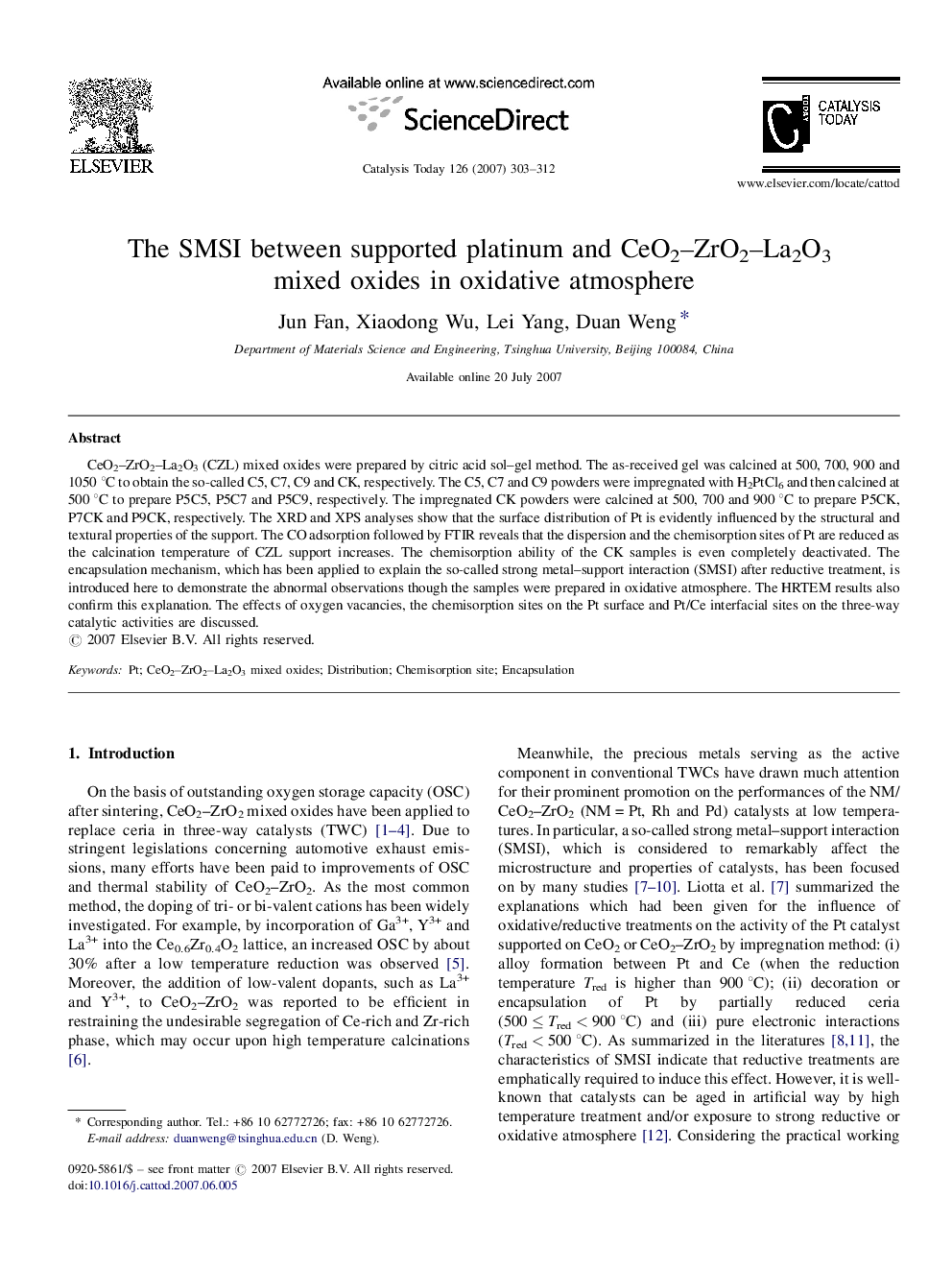| Article ID | Journal | Published Year | Pages | File Type |
|---|---|---|---|---|
| 57818 | Catalysis Today | 2007 | 10 Pages |
CeO2–ZrO2–La2O3 (CZL) mixed oxides were prepared by citric acid sol–gel method. The as-received gel was calcined at 500, 700, 900 and 1050 °C to obtain the so-called C5, C7, C9 and CK, respectively. The C5, C7 and C9 powders were impregnated with H2PtCl6 and then calcined at 500 °C to prepare P5C5, P5C7 and P5C9, respectively. The impregnated CK powders were calcined at 500, 700 and 900 °C to prepare P5CK, P7CK and P9CK, respectively. The XRD and XPS analyses show that the surface distribution of Pt is evidently influenced by the structural and textural properties of the support. The CO adsorption followed by FTIR reveals that the dispersion and the chemisorption sites of Pt are reduced as the calcination temperature of CZL support increases. The chemisorption ability of the CK samples is even completely deactivated. The encapsulation mechanism, which has been applied to explain the so-called strong metal–support interaction (SMSI) after reductive treatment, is introduced here to demonstrate the abnormal observations though the samples were prepared in oxidative atmosphere. The HRTEM results also confirm this explanation. The effects of oxygen vacancies, the chemisorption sites on the Pt surface and Pt/Ce interfacial sites on the three-way catalytic activities are discussed.
